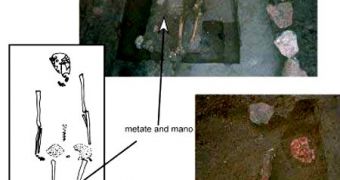For many years, the most important source of information about the lives of Ancient Maya came from inscriptions on the walls of monuments, and from inside various tombs. But archaeologists soon became aware of the fact that these artifacts only depicted the lives of affluent individuals, such as aristocrats, rulers and religious leaders. More recently, experts began gaining new insight into how more common Maya lived, from everyday objects these people embedded in the walls and floors of their homes during rituals, LiveScience reports.
A common ritual in this culture was for common people, such as servants and farmers, to burn down their homes at times, after embedding the walls and floors with ordinary objects. They then proceeded to rebuild the premises, in a process symbolizing rebirth. The accounts these insignificant objects provide are different from those found inscribed on official monuments. “But the commoners had their own way of recording their own history, not only their history as a family, but also their place in the cosmos,” explains University of Illinois anthropologist Lisa Lucero.
The expert was the leader of a new investigation tracing such artifacts, which was conducted at a location in central Belize. The area was populated with Mayan homes about 1,000 years ago. Early data would seem to indicate that indeed the rituals performed by the ruling class and the clergy were deeply rooted within common Maya tradition. The only difference is that the upper classes performed them at a much higher scale, as they benefited from considerably more resources than a simple peasant.
The team also discovered that rituals of termination and renewal were fairly common in this culture. They took place about 40 to 50 years apart and most likely coincided with very important dates in the civilization's calendar. During the ceremony, the walls of homes were razed, and the floors burnt. Various objects were then placed in the cindered remains, and burnt again. A new home was then built atop the old one, symbolizing renewal. “These things are buried, not to be seen, but it doesn't mean people forgot about them,” Lucero explains.

 14 DAY TRIAL //
14 DAY TRIAL //